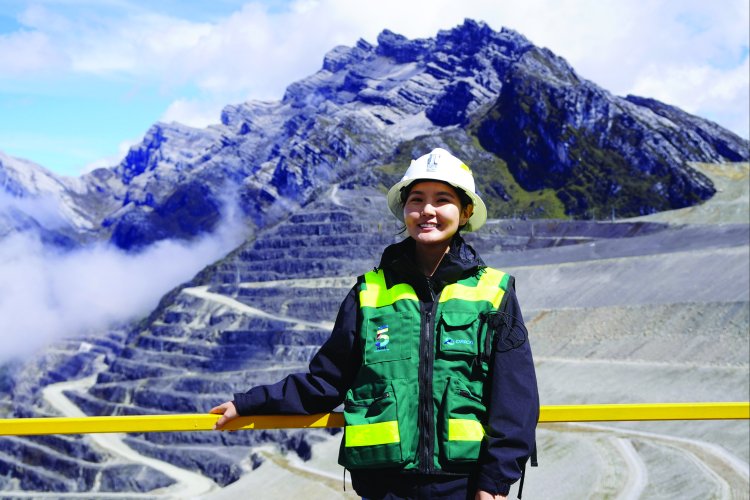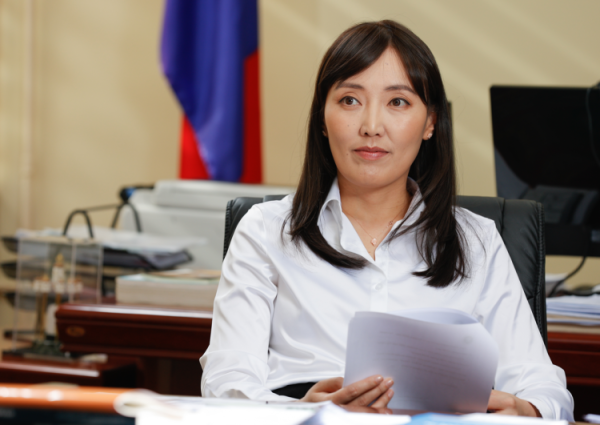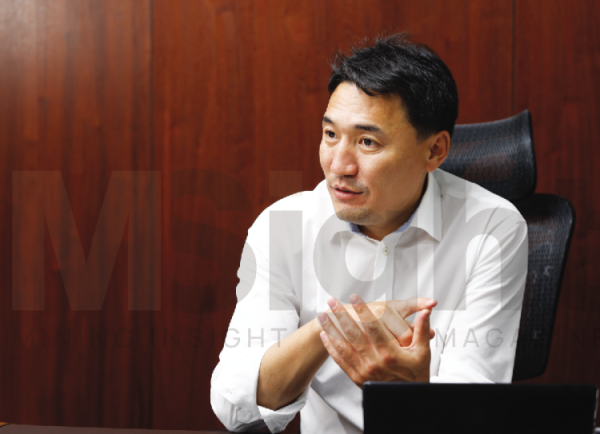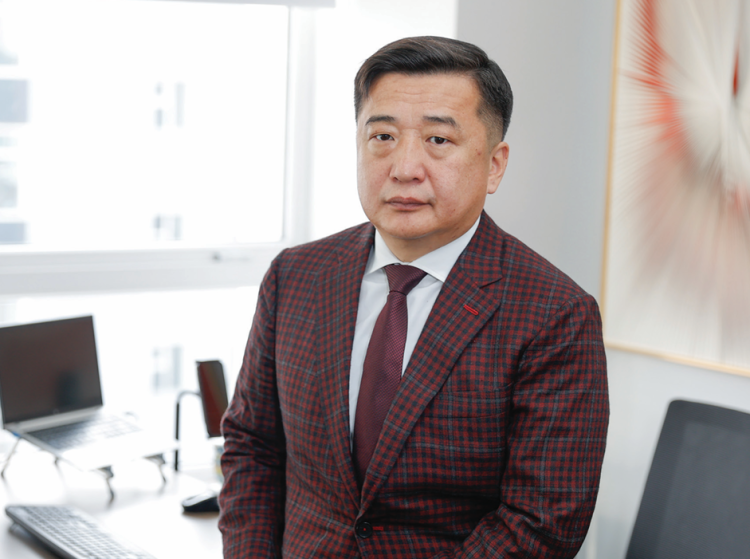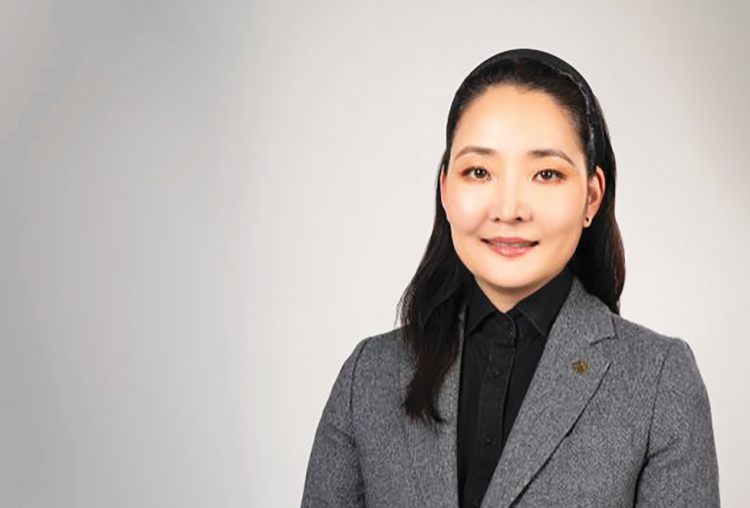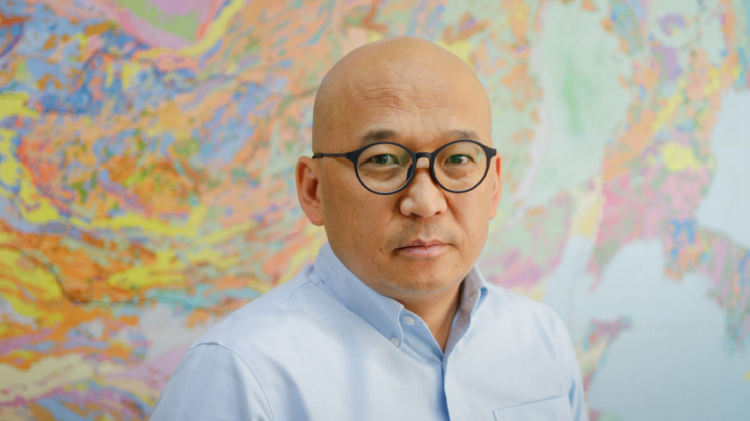A Mongolian female specialist, brings an experience from her work and visit at a prominent copper and gold mine in Indonesia. She is a young engineer working on the adoption of wireless electronic blasting systems in mining operations. In our discussion, we delve into her overseas experience, her unique perspective on Indonesian mining as a Mongolian engineer, and her future aspirations with Orica Mongolia.
First of all, please introduce yourself to the readers of Mining Insight journal. What is your profession? Let's start the interview with as Mongolian expat who has recently worked in Indonesia.
I graduated from the Mongolian University of Science and Technology's Geology and Mining School with a bachelor's degree in Mining Management in 2015. Subsequently, I pursued a master's degree in Mining Engineering in China before returning to Mongolia in 2020 and started my career in Orica Mongolia LLC. I joined as an engineer in the "Graduate Program," mainly working in technical service and chemical technology departments over the course of two years. While initially envisioning a career as a mining engineer, my trajectory shifted towards blasting engineering, maybe influenced by my career start in the blasting industry. Following nearly two years as a graduate engineer on the customer’s Oyu Tolgoi project, I assumed the role of a technical service engineer before transitioning to Orica's Asia team as a specialist in the "WebGen" wireless electronic blasting system, as a sole Mongolian member. My job led me to visit a large underground gold and copper mine in Indonesia in 2023, where I spent some time on learning the "WebGen" system with the intent of potentially introducing this technology to Mongolia. Currently, I'm working on a project aimed at introducing wireless electronic blasting system in another open-pit mine in Indonesia, with collaborative efforts with teammates to drive the project forward. So far, the initial stages of the project have been successful, and plan to go to Indonesia soon for the final stage of blasting.
Reflecting on mining, both Indonesia and Mongolia have ventured into the Chinese market over the past decade, particularly in the coal sector, positioning themselves as key competitors. Indonesia, akin to Mongolia, is recognized as a rapidly developing mining country. As an industry personnel who has been to such country, would you like to share some notable nuances you have noticed about the development, policy and trend of the Indonesian mining industry?
Indonesia is adopting a policy aimed at processing raw copper concentrate domestically rather than exporting it, for value added products. Large-scale copper smelting plants have already been built and operated by major mines, some of which are expected to be operational in the first half of this year. Objective is to transform mined copper concentrate into value-added copper cathodes domestically, indicative of a strategic shift towards maximizing domestic benefits from mineral resource extraction. Notably, only two major mines in Indonesia currently have temporary export rights for copper concentrate. During my visits to mining sites, I observed a development similar to our Erdenet City, with development of infrastructure, residential areas, and educational facilities. Impressively, these mining operations have spurred the development of small-scale settlements to support workforce needs, thriving communities adjacent to the mines. Some of the workers' families live there, and their children go to school and kindergarten. It was impressive to see a large settlement has developed due to mining.
After working in Indonesia for some time, what do you see are the opportunities and advantages of Mongolia's mining development, training of personnel, and investment attraction?
Compared to Indonesia, maybe for example, the minerals that are high in demand in the world market or with potential increase in the future could be produced as value-added or semi-processed products. Maybe one thing for attracting foreign investment lies in regulating related activities through industry policies or building processing plants. However, it's essential to acknowledge that Indonesia has direct sea access, possible for international product sales, an advantage Mongolia lacks due to its geographical location and rely on China as its primary market. To expand market reach, focusing on minerals with high demand for distribution to third markets could be worth considering.
An additional observation I've made underscores the crucial role that company management and practices play in driving the improvement of the mining industry. With the Oyu Tolgoi project, it’s no wonder it’s recognised as a globally esteemed mine in terms of safety, aligning closely with Rio Tinto's high standards. If each company establishes its own benchmarks and focuses on enhancing safety measures and personnel training, it can yield even minor yet valuable contributions to the overall performance of the industry while reaping benefits for the company itself. In conjunction with this, maybe could outline requirements and address concerns such as mining infrastructure, workforce, market destinations for raw materials and products, post-mining settlement development, all reinforced by comprehensive industry policies.
What challenges and difficulties did you face working abroad, especially as a woman in the blasting industry?
Certainly, taking on a project in an unfamiliar place with my limited experience proved to be challenging. But one of the strengths of my role is that behind one person there is a whole team network ready to help and support. Therefore, as a team we overcame most of challenges. On the other hand, despite speaking English, language barriers were prevalent not just in Indonesia but also in developing nations. Typically, I found myself relying on Indonesian colleagues for various tasks or just getting around. This experience gave me insight into the struggles faced by expatriates working in Mongolia. Additionally, apart from the necessary information, most conversations tended to be conducted in Mongolian. Moreover, there's often an unspoken expectation for expatriates to possess comprehensive knowledge, leading to a self-imposed pressure to excel and be recognized, particularly for young engineers like myself. Cultural differences were also evident during my time in Indonesia, highlighting the importance of understanding and respecting diverse cultural norms. For instance, Indonesians smile and exchange greetings, even among strangers, whereas in Mongolia, we usually just pass by each other, not to mention even smiling. Awareness of such things was essential as I distinctly remember being labeled as "strange" by one individual for not adhering to their customary greetings. Additionally, religion plays a significant role in Indonesian society, with approximately 95% of the population with religious practices that include specific prayer times. One case was that our team’s first blast was delayed until 12.00pm, which coincided with the prayer time and people went for praying. No matter how important the work is, they plan and organize works by taking into consideration the prayer times.
In general, were there a lot of women in Indonesia's mining industry?
Particularly in the field, women were a minority. For example, in underground mine, there were times I was the only woman working. Similarly, in open-pit mines, I encountered only one other woman among a workforce of 60-70 individuals across three crews. With this, women restrooms were scarce that I had to get help such as being driven to restroom located elsewhere, getting keys from offices, and waiting etc. These conditions made it difficult to maintain proper hydration, as it’s a safety concern in such environments. However, in office areas, the representation of female engineers and administrative workers was notably higher.
Has there been any improvement regarding this issue since your visit?
It's difficult to say definitively as I haven't been there for a long period. Since there are not many female employees regularly entering the mine, major issues may not have arisen so far. However, it's crucial for both company management and female employees working in the mine to voice any concerns so that management can address them promptly. While it may seem like a minor issue, it’s important for gender diversity.
How are women generally treated in the workplace?
Indonesians are very friendly and hold a positive attitude towards women. Orica has implemented a policy aimed at increasing the number of female operators in operations, with various programs introduced for this purpose. These initiatives include mentorship programs and fostering a workplace environment that values mutual respect. Similarly, the Mongolian branch also offers considerable support to women. However, generally in male-dominated industries, there's often an underlying bias where both men and women making the same mistake might implicitly lead to the assumption that the woman's error stems from her gender. Consequently, women may feel the need to put in more effort in their work.
How many women are employed at Orica and its branches?
Orica operates in over 100 countries, with approximately 20% of its workforce comprising women. Among them, there are likely numerous female blasting engineers. Notably, at the management level, women make up 35% of the workforce - a commendable figure in terms of gender representation.
Are there many other foreign expatriates working in Indonesian mines?
At the management level, there are a few expatriates, while the majority of personnel at open-pit mines are locals. However, in underground mines, the presence of expatriates is more prominent. The difference in operations between open-pit and underground mines, together with riskier environment in underground, maybe more necessary for foreign expats, particularly in roles where local expertise may be limited.
On one hand, with the Oyu Tolgoi project, Mongolian specialists with new skills have begun working abroad, predominantly in industries like drilling. However, there hasn't been much buzz surrounding the blasting sector. Have there been any Mongolian professionals working abroad in blasting before?
To my knowledge, there haven't been any Mongolian individuals from our company working abroad in the blasting field. Orica operates not only in Mongolia and Indonesia but also across various regions like Australia, the Philippines, India, Europe, Latin America, and North America. This global presence offers opportunities to work on projects in diverse countries, facilitating personnel training and project support. Becoming a specialist in new technology granted me this opportunity. The mining industry's advantage lies in its international job availability, with knowledge, experience, and English proficiency. With these qualities, Mongolian experts have the potential to work anywhere globally. To attract skilled personnel, the company covers expenses and facilitates family resettlement to ensure comfortable living conditions. Orica also transfers employees between Asia and Australia as well.
As a Mongolian engineer in an international company, do you find it feasible to exchange expertise with local professionals and other national companies?
Indeed, this is one of the reasons I joined Orica Mongolia initially. Upon hiring, our manager told me of generous knowledge sharing and committment to nurturing young mining professionals into internationally competitive experts. Consequently, our company has conducted numerous trainings on Safe and Efficient blasting for engineers at Oyu Tolgoi. We also present new technologies and practices during annual blasting conferences and collaborate with Mera LLC to produce booster explosives, fostering knowledge exchange. We are open to sharing our expertise whenever the opportunity arises.
Is there a trend towards hiring individuals with international project experience or those from international companies?
Certainly, it's considered advantageous. For me, working on a major mining project in my home country was an advantage. I've found that participating in new projects and mines at their initial stage offers invaluable experience compared to established operations. My involvement in introducing the "i-kon" electronic blasting system with Oyu Tolgoi was a pivotal experience that influenced my desire to work as a specialist abroad.
As a young female blasting engineer from Mongolia, what are your next career goals?
My job currently is always changing and flexible. While my goals may evolve over time, my current goal is on introducing the "WebGen" wireless electronic blasting system to Mongolia's mining industry. However, this depends on various factors such as the mine site, company requirements, and demand. Overall, I aspire to excel in blasting and specialize in this field, driven by my passion and interest. Given the scarcity of women in this field, there's an ample opportunity for empowerment and gaining experience. While blasting may seem daunting, it is an open field for women to thrive and contribute significantly.
Have you noticed the public attitude towards mining in Indonesia compared to the situation in Mongolia?
In Indonesia, mining is acknowledged as a major contributor of the economy alongside thriving sectors like tourism and agriculture, contributing significantly to the country's export industry. However, concerns regarding environmental impact often lead to protests and demonstrations against mining activities. Additionally, issues such as insufficient benefits for local communities or demand for increased job opportunities are raised. Despite this, it seemed mining is a fairly popular field of study, with many universities offering mining-focused programs, with young people pursuing careers in this profession.
How do Indonesian mining companies work with local communities?
Indonesian mining companies uphold public responsibility policies, undertaking various initiatives to benefit local communities. These included hiring local personnel, supporting education, implementing environmental conservation projects, and collaborating with domestic suppliers. I personally witnessed one such initiative during my time at mine site, where efforts were made to safeguard and release sea turtle hatchlings into the sea - a conservation measure aimed at protecting endangered species affected by human activities.
What community-related projects is your company involved in?
Orica's subsidiary in Indonesia is actively involved in supporting local communities through initiatives like providing materials and support for preschool programs and constructing daycare centers. Recognizing the challenges faced by parents who commute long distances for work, the daycare centers aim to provide care and education for young children. Additionally, projects aimed at protecting natural habitats, such as those for orangutan conservation on the island of Borneo, are undertaken in collaboration with local organizations. Similarly, Orica Mongolia is committed to community development through various initiatives, including the establishment of fully digital classroom at Khanbogd soum and organizing events like the Bagakhangai Marathon, collaborate with institutions like the Mongolian University of Science and Technology.
Have you adapted to the working environment in Indonesia?
Adapting to the working environment at mine site requires mental and physical preparation. For instance, one mine was situated at high altitudes of nearly 3,000 meters above sea level, necessitating medical check-ups before visiting and attention to high blood pressure. Furthermore, Indonesian working rosters are longer compared to Mongolia. While some mines operate on a 4-week on, 2-week off roster, others adhere to a 6/2 or 10/2 roster, resulting in extended periods spent at the mine. Despite initial concerns about the hot weather, I found the working conditions to be quite adaptable.
How does safety in Indonesia compare to Mongolia from your perspective?
Safety remains important in both countries, with stringent procedures and standards in place to ensure worker well-being. Upon arrival at mine sites, new employees undergo introductory safety courses, with additional comprehensive training provided for longer-term working schedule. However, safety requirements may vary slightly across mines depending on management and standards.
What about safety within the blasting industry you work in?
Blasting is a critical yet risky aspect of mining operations, necessitating adherence to strict regulations governing the production, usage, storage, and transportation of explosives. Specialized training is mandatory for individuals working in blasting, with continuous risk assessment and mitigation measures implemented. Also, our company and many mines adhere to the principle that if the work you are about to do is risky or if someone is doing something unsafe, we have the right to stop it. Despite efforts to improve safety, accidents related to explosive materials still occur around the world, highlighting the need for ongoing technological advancements to enhance safety measures.
What sets the blasting industry apart?
Blasting is a field with applications extending beyond mining to defense, construction, and infrastructure development. The manner in which blasting activities are executed directly impacts results, necessitating careful consideration of various factors. When blasting is conducted in proximity to residential areas, factors such as noise, fumes, flyrock, vibration, air blast, or for mines, the stability of mine walls and rock fragmentation must be meticulously assessed. Compliance with laws and regulations is imperative to mitigate risks and safeguard overall mine operations.
Advancements in technology have paved the way for optimized blasting practices and the development of innovative mining methods. For instance, the introduction of the WebGen wireless electronic blasting system has revolutionized traditional wired blasting methods by eliminating the need for surface wires. This innovation enables the exploration of new blasting techniques previously deemed impractical, such as driving vehicles over charged boreholes, blasting double benches, and implementing novel methods in underground mines. Beyond enhancing blasting operations, these advancements contribute to improved productivity and expedited project timelines, presenting potential novel ways of mining practice.
After the pandemic, the world is rapidly entering digital form in all fields of technology. There is also talk of robots replacing humans and job losses. How do you see this trend from a specialist related to the technology industry?
Digital systems are undeniably the future of mining, offering numerous benefits in terms of risk mitigation, operational optimization, and sustainability. From geological exploration, drill and blasting to ore processing, digital systems play a pivotal role in enhancing productivity and safety. The goal is to streamline human work processes, improve efficiency, and ensure long-term viability, rather than displacing workers. Moreover, the introduction of digital systems is likely to create employment opportunities for women.
To what extent have digital systems been integrated into the mines you've worked at?
Both are large mines, so significant investments are made in digitalization to enhance safety and profitability. Various digital systems, such as Blast IQ for blasting data automation, FragTrack for rock fragmentation analysis, and 4D systems for bulk explosive energy adjustment, are being introduced. While the initial costs of automation technology are high, many mines opt for these solutions due to their long-term benefits and value.
Thank you for the conversation.




